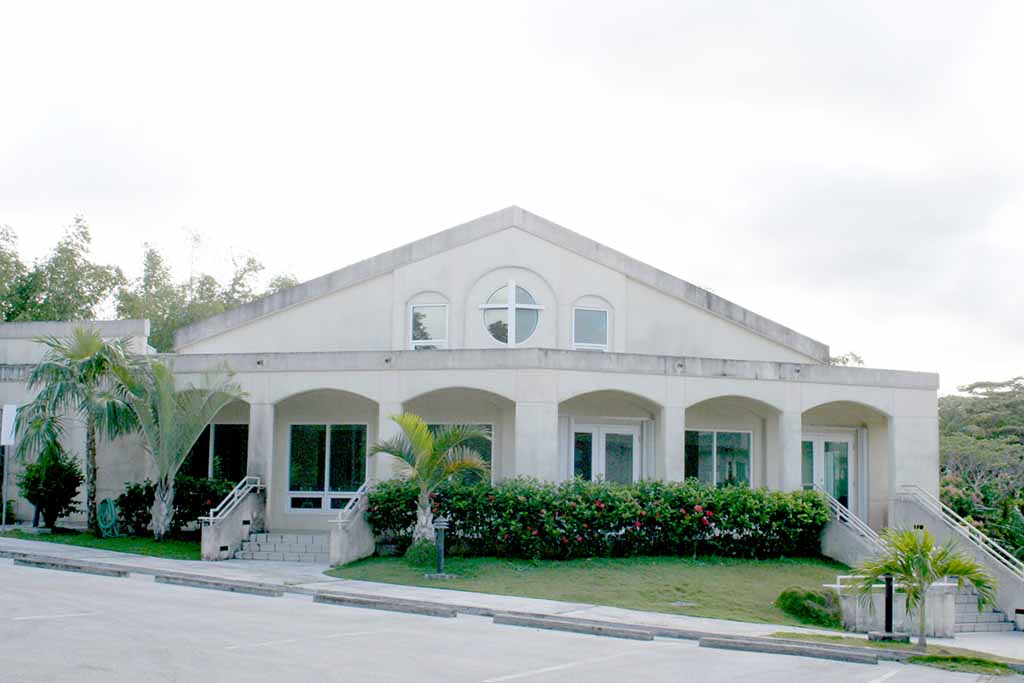
History In Guam
The origins of the Faith Presbyterian Christian Reformed Church in Guam date back to the 1950s, when military personnel from the Protestant Reformed Church worshiped together at the Navy Chapel. Filipino contract workers assisting with Guam’s postwar reconstruction eventually joined this group. These earliest members of the church focused their ministry on an area called Camp Busanda, which was a government-operated facility that housed contract workers. Today, that area is known as Camp Covington, Hågat.
A serviceman and elder in the Orthodox Presbyterian Church by the name of John Reynolds led the first Bible study classes in a Quonset hut at the camp. As interest in the church grew, Navy Chaplain Lynn Wade granted Reynolds permission to hold regular Sunday worship services. Eventually, the church would come to be known as Camp Busanda Christian Church, with Reynolds serving as its first pastor.
The church continued its expansion, attracting both military and civilian followers. A group of civilian families who belonged to the Protestant Reformed Church in Grand Rapids, Michigan, would provide the next step in the church’s development. These families successfully contacted their home church in Michigan about adopting the Guam church as a missionary project, as the church was then operating independently from the military.
When the Navy released Lynn Wade in 1954, he remained on the island to assist the Protestant Reformed Christians. In 1959, the Reverend John Hofman arrived in Guam to assist Wade. At this time, the Protestant Reformed Church in the United States was undergoing its own reorganization, and merged with the Christian Reformed Church of North America (CRCNA). As a result of the merger, the Protestant Reformed Church turned over its property along Marine Drive to the Christian Reformed Board of Foreign Missions in 1961. The church now became known as the Faith Christian Church, with Rev. Hofman as pastor.
In 1962, Mr. and Mrs. Jay Poel arrived in Guam to manage the church’s bookstore and assist with evangelization. They would eventually succeed Rev. Hofman as leaders of the Guam mission. By 1964, the chapel became known as the Faith Christian Reformed Church and attendance at weekly services included statesiders, Filipinos and Micronesians studying in Guam. Rev. Dykema would be appointed missionary pastor in 1965, while the Poels turned their attention to the growing bookstore ministry. In 1966, a new chapel was constructed along Marine Drive in East Agana, adjacent to the Faith Bookstore.
The following decade witnessed more changes for the church. In 1973, Faith Church invited the Rev. David Hwan Jo of Korea to begin a ministry among Koreans living on the island. The Korean ministry eventually grew into a separate church. Furthermore, in 1979, the church established a Daily Vacation Bible School to expand the work done with the Micronesian student ministry.
In 1983, Neil Culbertson and his wife Janie Lou arrived on the island to oversee the Guam mission, and remained at the helm of the Faith Presbyterian Christian Reformed Church until July 2010. Pastor Neil Culbertson has guided the church’s relocation and building construction in Chalan Pago, which was dedicated in 2003. He also helped in founding a day-care and preschool ministry called the Little Lambs Preschool that opened in 2006 until closing in 2014. Pastor Tom and Rose Van Engen arrived and began ministry at Faith Church in May 2013.
Church history and beliefs
The beliefs and doctrine of the Christian Reformed Church are based on the bible. Followers believe that the Bible is the inspired word of God and is the final authority in all matters on which it speaks.
The church has its origins with the Protestant Reformation of 1517, when the Roman Catholic Church was divided into several branches. Among the branches was the Lutheran Church which identifies with the teachings of Martin Luther. Another branch developed under the influence of Ulrich Zwingli and later John Calvin. Calvinists believe in the whole counsel of God taught in the Holy Bible and well summarized in the Heidelberg Catechism, the Belgic Confession, and the Canons of Dort. Central to CRCNA beliefs are the “5 Sola’s of the Reformation (sola in Latin means ‘only’ or ‘alone’)”, by Scripture alone, by Christ alone, by grace alone, by faith alone, and for glory to God alone. Calvinists also believe in the biblical teachings of predestination and that outside influences or even bad choices cannot take individuals away from God, whose rule over all of creation gives his followers sure hope for the future .
When the split from the Roman church occurred, churches in Scotland called themselves “Presbyterian” and “Reformed.” The Reformed churches thrived in the Netherlands, and a branch of Dutch Calvinism evolved. Dutch Calvinism ultimately gave rise to the Christian Reformed Church. In the mid-1800s, a group of the followers of the Dutch Reformed Church moved to the US, and in 1857, started the CRCNA.
For further reading
Faith Presbyterian Christian Reformed Church of Guam. “Welcome.”
Christian Reformed Church. “Homepage.”
